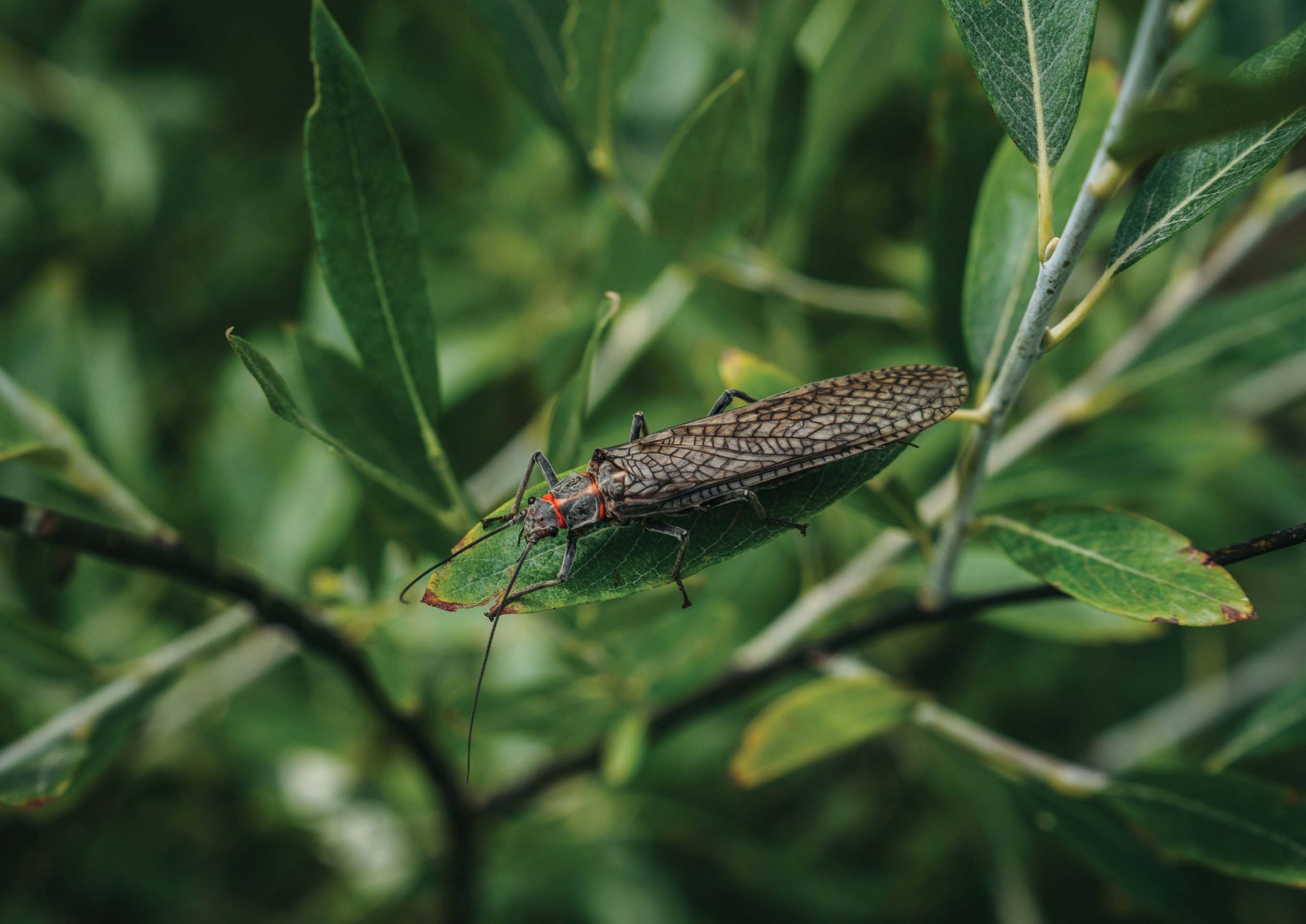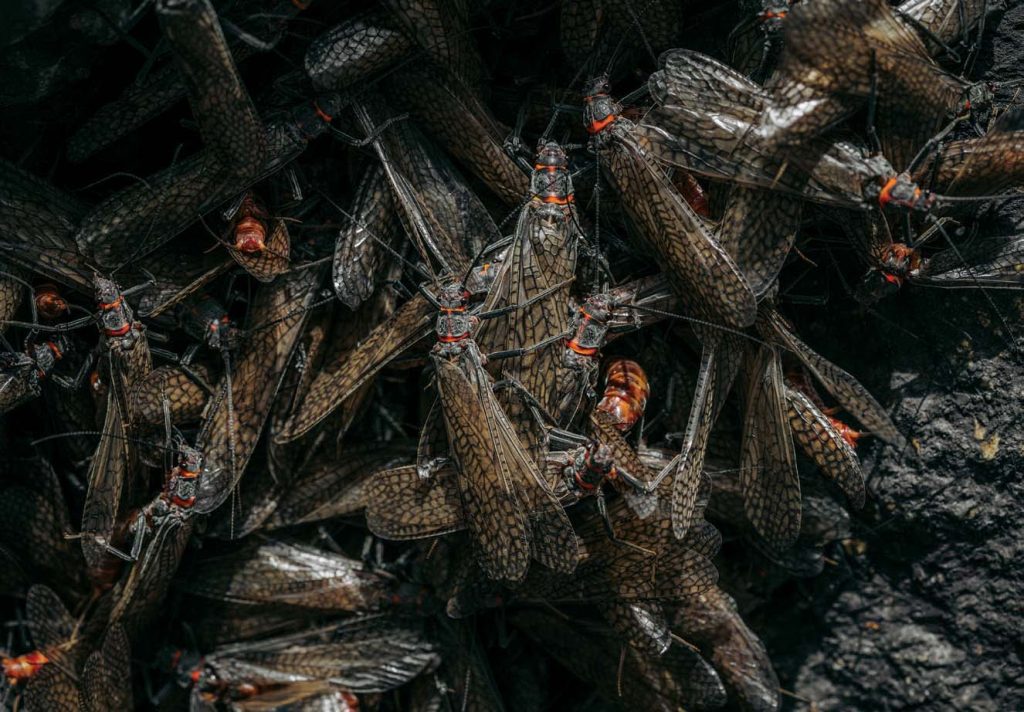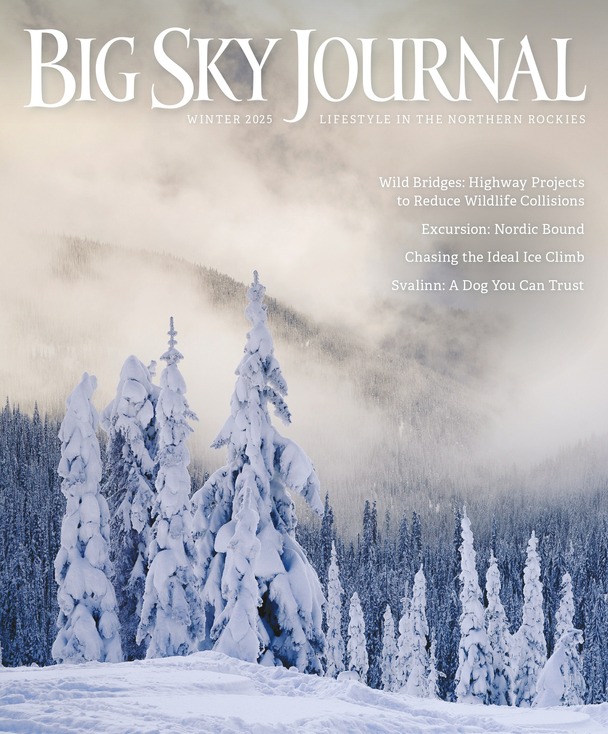
30 Jan Outside: The Salmonfly Hatch
On a picture-perfect June morning, a week shy of the summer solstice, sunlight streams through the spires of the enormous ponderosa pines above me. I sit mesmerized, perched in the palm of a cool granite outcropping worn smooth through a millennium of rushing waters, fixated on the glitter of refracted light dancing on the surface of Montana’s Big Blackfoot River. A gentle breeze caresses my face, soft like the downy feathers of a baby nighthawk I once held, and ruffles the bunchgrass on the knoll behind me. My mind is free. I have no thoughts. I just am.
Directly across the river, silhouettes of tamaracks and Douglas fir stand in shades of cyan and emerald against an electric blue sky, empty except for the clouds floating aimlessly above the ridgeline, dollops of golden plum and raspberry vanilla.
A lazuli bunting is agitated by my presence and vocalizes its displeasure through a series of complex, high-pitched warbles. Chew chew, sweet sweet, squeak, zipper, spit.
The vivid lapis blue plumage, a splash of brilliance against the red osier dogwood that lines the banks of the river, and piercing, rapid-fire harangue startles me out of my reverie. I suspect his mate and their brood of fledglings reside in a nest nearby. Turning toward the direction of the scolding, I use my most reassuring voice.
“Hey, calm down. I’m just here to watch the salmonfly hatch.”
Newly emerged salmonflies, Pteronarcys californica, hover precariously above the crystal-clear surface of the water. The enormous orange-and-black-bodied flies, upward of 3 inches in length, have just emerged from their nymphal state after spending the last three years underwater.
With twin pairs of wings, females fly upstream, slow and steady like freight helicopters, looking for males to fertilize their eggs in midair. Once a female has mated, she will fly low or land in the water, dropping her egg sack. Kestrels, shrikes, western tanagers, flycatchers, and even an occasional peregrine falcon will snatch the protein-rich bodies as they hover, while the trout below — browns, rainbows, bulls, and cutthroats — gorge themselves on the unlucky ones who fly too low or find themselves flailing on the surface of the water.
The Blackfoot River is one of the coldest rivers in Montana, flowing east to west with much of its south bank lying in the shadow of the Garnet Mountain Range. Fed by high-mountain springs and snowmelt, the river is home to big bugs and big trout, as well as other mammals, reptiles, crustaceans, and amphibians that thrive in its clean, oxygen-rich water.
From my vantage point above the river, I watch the salmonflies glide deliberately over the riffles and runs, and remind myself that, hours earlier, I lay floating in that very spot, above a jewel-stained gravel bed of ancient sedimentary belt rocks in colors of purple, blue, yellow, and cream — formed a billion or more years ago — each stone unique in shape and personality.
Earlier, as my fingertips brushed against the algae whiskers on the faces of the cobbles beneath me, with rivulets of cold water streaming over my body, my hair wet, fanning out around my face, I looked upward at the beauty of a languid summer morning, mindful that I was not alone.

Photo by JAKOB BURLESON
Millions of tiny creatures were in the water with me, aquatic insects in varying stages of their life cycles: salmonflies, caddisflies, mayflies, dragonflies, and midges. Some, in the nymphal stage, clung to the underside of rocks, while others had settled deeper in the benthic layer of the riverbed, hidden in the sediment and gravel. Still others were in the process of swimming to the surface of the water or climbing out of the river to rest on exposed rocks, vegetation, and willows along the shore before breaking out of their protective exoskeletons.
I remember my reaction the first time, years ago, that a salmonfly landed on my shirt sleeve: the surprise and fear I felt having an insect that large invade my space. Fortunately, a friend was nearby and assured me that the creature was gentle, and I had no cause for panic.
“It’s harmless, just resting. Occasionally, these fellows have to take a break, too.”
“I don’t care,” I replied, refusing to look at it again. “Please, just get it off me!”
I’m embarrassed now, thinking about my behavior that day. What happened to the little girl who had spent much of her childhood outdoors, captivated by rollie pollies, June bugs, fuzzy caterpillars, and horn toads? Those creatures had been my playmates, my soulmates. We shared stories and secrets. We were connected.
A grove of 200-year-old post oak trees in our back pasture was my magical kingdom, my extended family. In the summer, I would lie in their shadows, inhaling the scent of loamy soil and bluestem in the outlying fields, listening to the lighthearted prattle of the squirrels above me, the cadence of my day in sync with the rhythm of the earth. Clouds amused me for hours with their whimsical shapes, rainbow colors, and kaleidoscope of mercurial personalities. Wildflowers — red Drummond phlox, sunshine yellow coreopsis, pink evening primrose, and more — taught me color, composition, and balance.
When had I become indifferent to the natural world? Why had I stopped listening?
In his book, The Dawn of a Mindful Universe: A Manifesto for Humanity’s Future, astronomer and physicist Marcelo Gleiser asserts that we need to reassess our place in nature, that man is interconnected with all that exists, and we carry the universe within us. Gleiser believes we cannot begin to heal our planet until we reconnect with the natural world first.
The Salish, Kootenai, Blackfeet, and other tribes that walked the Blackfoot Valley for thousands of years before Europeans arrived were one with the earth, brothers and sisters to the land, plants, and animals. They believed the natural world was intelligent, sacred, diverse. Man was not above nature, but part of its collective. The natural world had a voice, and the Indigenous people listened.
As I continue to watch the salmonfly hatch, my thoughts drift to other wildlife I’ve seen along the river: two lean, muscular mountain lions sauntering shoulder to shoulder early one morning, their tawny coats dark and lustrous in the gentle rain; the magnificent bald eagle, with imposing countenance and piercing eyes, who glides upriver at dawn with a purpose; the red fox who quietly slips down to the river’s edge, amid wild mint and fiddleheads, for a cold sip before discreetly disappearing into the understory. They all have stories to tell.
Slowly, my attention turns to a mourning cloak butterfly, Nymphalis antiopa, that has just alighted on the flat outcrop beside me, easily recognizable by the painted golden edges on the deep reddish-brown wings inlaid with tiny cornflower-blue orbs as brilliant as Montana’s Yogo sapphires.
She gently flutters her wings and settles into a regal pose. I look over.
“You are exquisite. No wonder the Brits call you the Camberwell Beauty. And do you also know you’re the official state insect of Montana?”
Seconds pass. She flutters her wings again. And I lean in.
“So, what’s your story?”
Deborah Houlihan O’Connell is a freelance writer whose articles are inspired by our inherent connection to nature. She lives with her husband, Jerry, and dog, Burnfoot, on the banks of the Big Blackfoot River in western Montana. When she isn’t writing, she is out walking in the wild.




No Comments